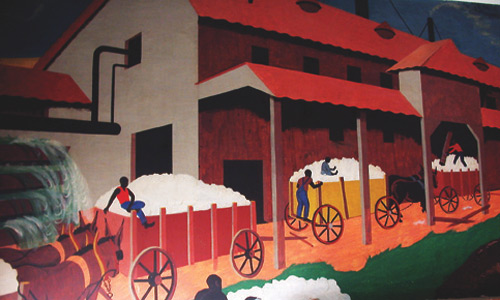
Zander, who has studied the murals under one of the first Faculty Research Fellow grants from the Office of Research and Sponsored Programs, says “Art for the People” focused on murals commissioned in several Mississippi post offices from 1939 to 1941. The work was part of a project initiated by the Department of the Treasury’s Section of Fine Arts to inspire local artists.
This is fitting, as Zander’s Faculty Research Fellow grant is provided by the university to support new research by UM faculty. These grants constitute a major opportunity for internal funding at UM.
“These are important grants,” says Alice Clark, vice chancellor for research and sponsored programs. “These grants are given primarily to tenure-track faculty who are just starting out and to established faculty who are looking to make their mark in a new area of specialization.”
Giving priority to these faculty is key to ensuring that UM research continues to grow because the grants are intended to help researchers get their projects to a point where they can attract external funding.
As for Zander’s project, she says artwork created under the Treasury Program (not the WPA, as many people believe) can be seen in a number of Mississippi towns, including Amory, Booneville, Leland, New Albany, Newton, Pascagoula, Pontotoc and Tylertown. In all, 28 federally commissioned murals remain in the state. Two were painted over, and one was covered.
“The people in charge of the project had a lot of restrictions and were very conscious of not making people look foolish or cartoonish,” Zander says. “But [Stuart] Purser got away with a modern, stylized piece in his mural in Leland, and John McCrady’s mural, in Amory, is really humorous. There’s a town drunk and a group of ladies gossiping and pigs in the street.”
Batesville
Although the mural that hangs in the workroom of the new post office is attractive, artist Eve Kottgen’s work has been criticized for its romantic depiction of picking cotton.
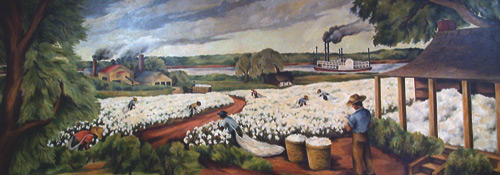
Amory
John McCrady grew up in Oxford and was one of the few artists intimately familiar with the community he illustrated. It is said that he could name all of the people in the painting. The scene on the right shows citizens saving the town from a yellow fever epidemic by preventing travelers from disembarking from the train. The town drunk stumbles humorously beside two pigs while a horse runs away with a carriage and ladies of the town gossip about it all.
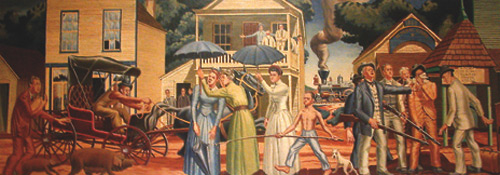
Carthage
Carthage is one of the few post offices to have a bas-relief sculpture—this one created by artist Peter Dalton—instead of a mural. This contemporary view of the lobby reflects only minor changes in more than 60 years.
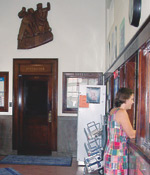
Magnolia
John Fyfe was an art teacher in Memphis, and his depiction of the July 4th celebration by town founders was met with such approval that he was commissioned to complete two more murals based on Magnolia’s history. The Magnolia post office is one of a handful in the country with more than one mural.
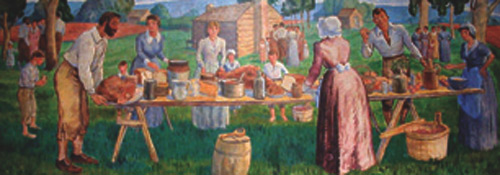
Newton
Franklin Boggs is one of the few muralists still living. His work was featured recently in a Mississippi Public Broadcasting special on artists of World War II. He painted the Newton mural, “Farm and Industry,” with his wife, Mary.
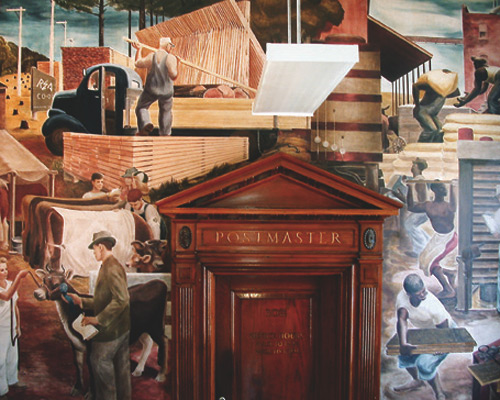
Hazelhurst
In Auriel Bessemer’s “Life in the Cotton Belt,” farming and natural resources co-exist with industry. Together, they promise hope for a prosperous future.
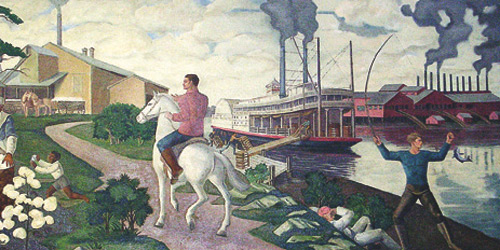
Pascagoula
The mural at Pascagoula was painted by Lorin Thompson, who later became famous for illustrating the children’s magazine Ranger Rick. This mural depicts the legend of the “Singing River,” a love story in which the tribe of Pascagoula drowned themselves in the river to save two lovers from the fierce Biloxi Indians. It is said that the river still “sings” when conditions are right.
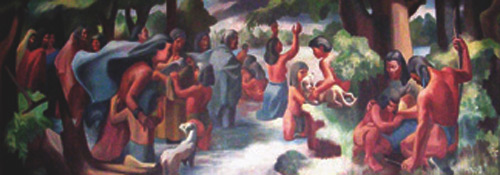
Pontotoc
Joseph Pollet chose to illustrate the wedding of Ortiz and Sewanea. One of explorer Hernando De Soto’s troops married a Seminole princess just south of what is now Pontotoc in what was likely the first Christian wedding on American soil.
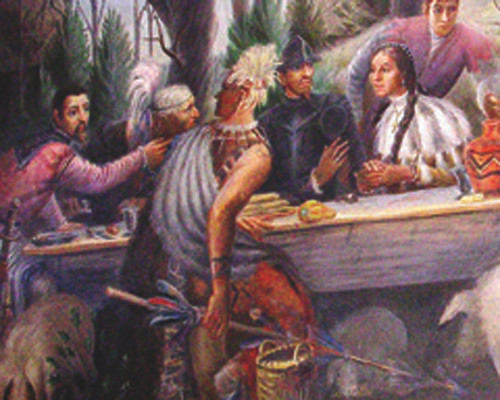
Tylertown
Lucile Blanch created this charming mural, “Rural Mississippi from Early Days to the Present,” which is actually a fresco painted directly onto the wall. Blanch is one of the few artists who actually painted the mural in the same town for which the work was commissioned. She took great pleasure in talking to townsfolk about the progress of the painting, and they, in turn, enjoyed seeing places they knew develop in the work.
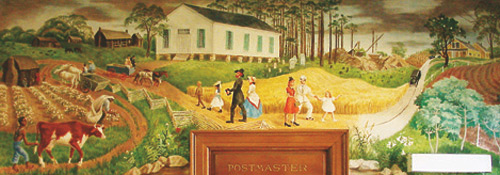
Leland
The mural in Leland was painted by Stuart Purser, first chair of the UM Department of Art. Locals generally objected to murals that they judged too abstract, but Purser knew just how much he could get away with. He also reported that his father-in-law ginned cotton.
